Can You Compost Cat Litter or Poop? Tips, Types & How to Guide
-
Pete Ortiz
- Last updated:
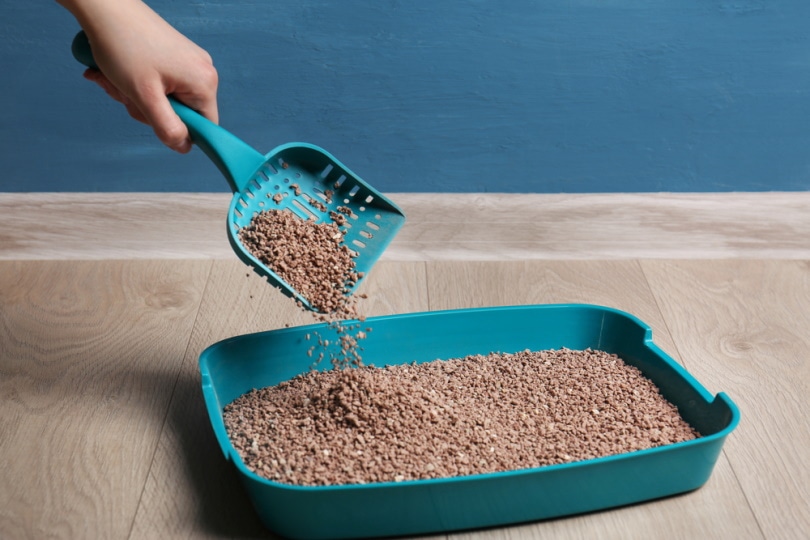
Composting is an eco-friendly way to create homemade fertilizer using organic materials found in your house. Many materials can be used as compost, including eggshells, nutshells, fruits, hair and fur, livestock manure, and even some types of cat litter. Composting is a rewarding method of creating fertilizer since it reduces organic waste and provides your plants with humus-like soil rich in nutrients.
Most types of cat litter can become compost, although some may be harmful to the soil and therefore cannot be used to make compost. Composting is possible with biodegradable cat litter as long as it is free of additives. When composting cat poop, you should use it only for fertilizing ornamental plants because it contains pathogens and parasites that can be harmful to people and, therefore, should not be anywhere near edible plants.
What Types of Cat Litter Are Compostable?
Most fully biodegradable cat litter is usually safe for composting, although many types cannot degrade in the compost pile, such as litter containing chemical additives. The safest litter to use is the one that is made from all-natural, organic materials like wood, paper, grass, wheat, and others including:
- Paper
- Pine
- Wood pellets
- Grass
- Nutshells
- Wheat and corn
These plant-based cat litters are entirely biodegradable and can safely go into your compost pile. It is more nature-friendly to compost these instead of throwing them in the trash, as they can add value and nutrients to your finished compost.
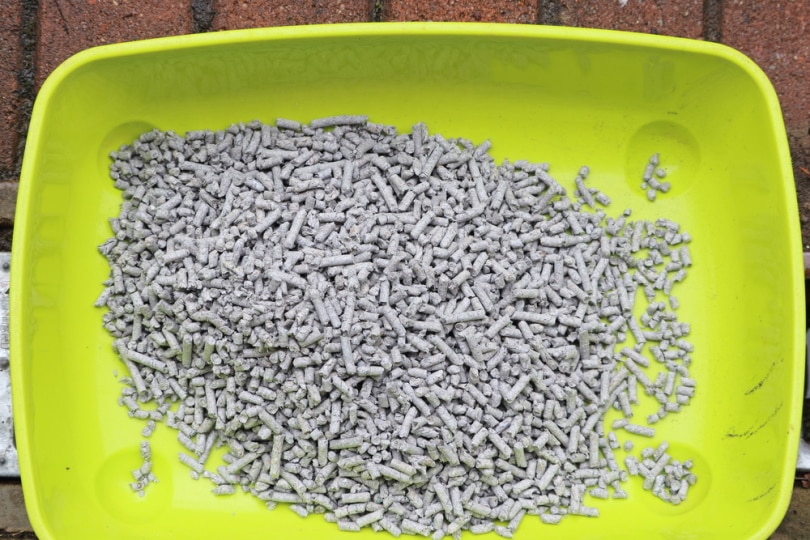
What Types of Cat Litter Are Not Compostable?
Cat litter that contains additives and fragrances can be very harmful to your plant’s soil, so it is best to dispose of it properly. Some cat litter is not bio-degradable and, therefore, will not have any use in your compost pile and can only disrupt the natural process that occurs during composting. Some types of cat litter that are not compostable are:
- Sand Litter
- Clay Litter
- Crystal Litter
If you decide to compost your kitty litter, instead of disposing of it or throwing it in the trash, do extensive research on which types of waste are compostable. All litter is different, and if you want your compost pile to develop into healthy, nutrient-rich soil, it is best to use the materials you are certain about than to experiment and risk damaging your entire progress.
Is it Safe to Compost Cat Litter?
While cat litter and poop are typically safe, there are some things that you will need to consider before beginning with this garden project. Cat poop contains many bacteria and parasites, such as Toxoplasma-gondii. This parasite can be very dangerous if it ends up in your compost pile since the temperatures that compost creates are not high enough to kill it.
If you are not careful, this parasite can harm anyone who gets in touch with it, primarily people with low immune systems and pregnant women. It is crucial to take all measures of caution to prevent any risks of parasites and pathogens developing in your compost pile.
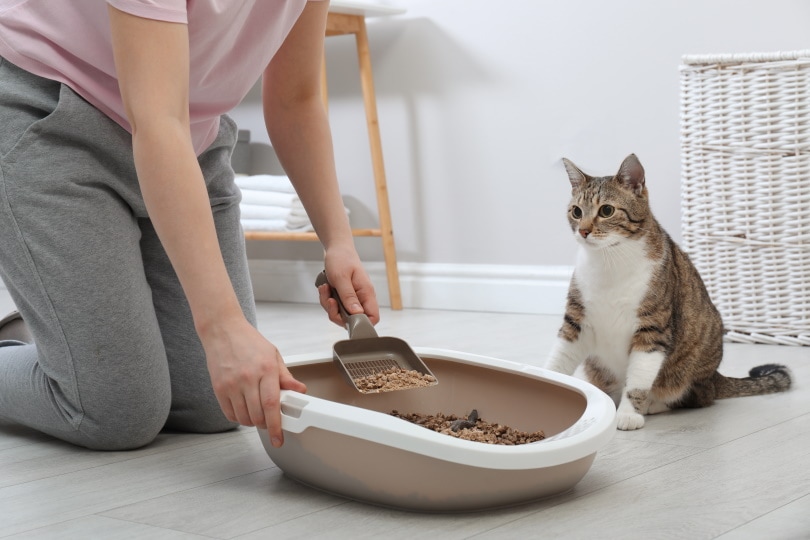
- Compost that contains cat poop should not be near edible plants
- To use this compost for your edible garden, make sure only to use biodegradable kitty litter
- Hygiene is crucial when handling the compost pile, especially composted kitty waste
- Leave your compost pile to sit for at least a whole year for all pathogens to die off
- Make sure your cat has a healthy diet
How to Compost Cat Litter?
1. Gather the cat litter
When you decide to compost your cat litter, it is best to gather a significant amount into a plastic bag and have it ready for when you create your compost pile. This way, you will be able to filter in time which cat litter will go into your compost and which will go into the trash bin.
2. Prepare the compost pile
Find an ideal spot in your garden that will serve as your compost pile. This spot should be secluded and shielded from direct sunlight and rain. If you do not have an ideal location, you can create an improvised shelter by covering your pile with a pond liner, plastic sheet, or some other material similar to these.
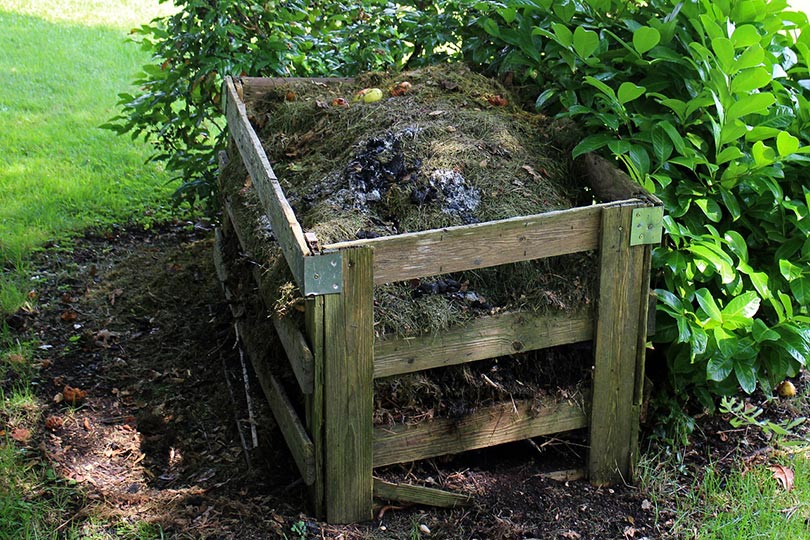
3. Create a base for the compost
Start with a layer of sawdust, straw, or dried leaves covering the entire bottom. These materials will let your compost pile aerate. It would be ideal to place your compost pile on bare earth. This way, you will allow for it to have air circulation so that worms and other organisms can move and set in motion the circling of beneficial nutrients throughout your compost pile.
4. Start adding cat litter
You can finally start adding the collected cat litter after setting up the base, which is an essential part of your compost pile. Add a thick layer of cat litter, and on top, pour a thin layer of brown materials like twigs, grass, dried leaves, and other organic materials. Repeat this pattern every time; after adding cat litter and other green materials to your compost, cover them with brown material to establish balance.
5. Tumble your compost pile regularly
To allow your compost to develop equally in all places, turn it regularly. The highest temperatures your compost will achieve are in the pile’s center. Most bacteria that will be involved in composting will be aerobic, which means they thrive in oxygen. Tumbling the pile will provide airflow that will help the aerobic bacteria speed up the process.
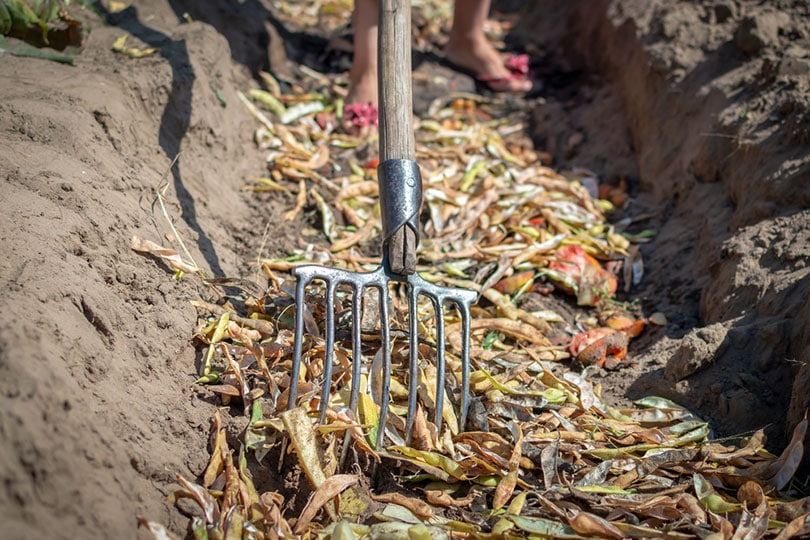
How Long Does Cat Litter Take To Decompose?
All compost takes at least one year to develop. This process will depend on many factors, but the most crucial factor will be your area’s climate. The ideal average temperature of the composting pile is between 135°F and 160°F. Anything below this temperature will not be enough for the pathogens to be destroyed, which means the compost pile will have to sit for another year or so.
Final Thoughts
Composting is an excellent, environmentally-friendly way to create fertilizer for your soil by reducing organic waste. Make sure to follow this guide carefully to make your kitty litter into a composting pile that will be safe to use in your garden.
Featured Image Credit: Africa Studio, Shutterstock
Contents




